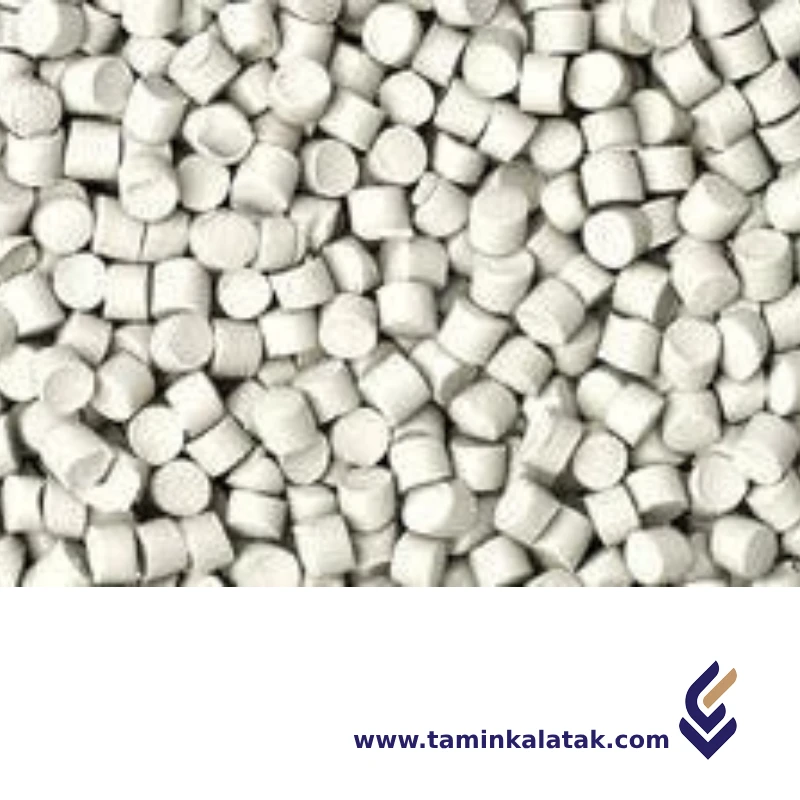Polymers are made up of very large molecules made up of many repeating units called monomers, which ultimately form this long polymer chain
A compound is a polymer blend mixed with additives, fillers, and reinforcements to achieve specific properties for end-use applications. A masterbatch is a concentrated mixture of additives or pigments in a carrier resin, used to enhance plastics without altering their base properties.
Polyethylene Talc Compound
A Polyethylene Talc Compound is a polymer blend that consists of polyethylene (PE) as the base resin and talc as a filler or reinforcing agent. This type of compound is used to improve the mechanical, thermal, and processing properties of polyethylene-based materials.
Structure Polyethylene Talc Compound
The structure of a polyethylene talc compound consists of a polymer matrix made of polyethylene, which can be low-density polyethylene (LDPE), high-density polyethylene (HDPE), or linear low-density polyethylene (LLDPE), combined with talc as a filler or reinforcing agent. The talc particles are dispersed throughout the polyethylene matrix, creating a composite material with enhanced mechanical and thermal properties. Talc, a naturally occurring magnesium silicate mineral, has a plate-like structure that helps improve stiffness, dimensional stability, and heat resistance when integrated into the polyethylene. The dispersion of talc within the polyethylene affects the overall material performance, depending on factors such as particle size, distribution, and surface treatment. In some formulations, additional additives such as compatibilizers, processing aids, and stabilizers are included to optimize performance, improve processing characteristics, and ensure uniform dispersion of the talc within the polyethylene matrix. The resulting compound maintains the flexibility and lightweight nature of polyethylene while benefiting from the increased rigidity and thermal stability provided by the talc.
Properties Polyethylene Talc Compound
The properties of polyethylene talc compound are influenced by the combination of polyethylene as the base resin and talc as a reinforcing filler. This compound exhibits improved stiffness and rigidity compared to pure polyethylene due to the presence of talc, which enhances its structural integrity. It also has better heat resistance, as talc increases the heat deflection temperature, making the material more suitable for applications exposed to higher temperatures. The addition of talc improves dimensional stability by reducing shrinkage and warpage, which is especially beneficial in injection molding and thermoforming processes. Furthermore, the compound has enhanced barrier properties, offering better resistance to moisture and gas permeability. It also provides improved processability by reducing melt viscosity, aiding in better mold flow and reduced cycle times. Additionally, the talc content contributes to cost reduction by replacing part of the more expensive polyethylene resin while maintaining desirable mechanical properties. The surface characteristics of the compound can be modified depending on the talc concentration, leading to improved scratch and wear resistance. Overall, polyethylene talc compounds offer a balance of strength, thermal stability, and process efficiency, making them suitable for a wide range of industrial applications.
Applications Polyethylene Talc Compound
- Automotive parts such as dashboards, door panels, and under-the-hood components
- Packaging materials including rigid containers, films, and industrial packaging
- Consumer goods such as household appliances, toys, and furniture components
- Industrial applications like pipes, sheets, and construction materials
- Electrical and electronic enclosures for improved insulation and durability
- Medical and pharmaceutical containers due to enhanced barrier properties
Advantages Polyethylene Talc Compound
- Increased stiffness and rigidity for improved structural performance
- Enhanced heat resistance, making it suitable for high-temperature applications
- Better dimensional stability, reducing shrinkage and warpage in molded parts
- Cost-effective due to talc acting as a filler, reducing overall material costs
- Improved processability with better mold flow and reduced cycle times
- Enhanced surface properties such as scratch and wear resistance
- Better barrier properties against moisture and gas permeability
Disadvantages Polyethylene Talc Compound
- Reduced impact resistance compared to pure polyethylene, making it more brittle
- Increased weight due to the addition of talc, which may not be ideal for lightweight applications
- Possible reduction in transparency, limiting its use in clear or translucent products
- Potential difficulties in recycling due to the composite nature of the material
- May require additional processing adjustments to ensure uniform dispersion of talc in the polymer matrix
Polyethylene Talc Compound
| Products | MFI(g/10 min) | Density(g/cm³) | Proess method | Applications | Data Sheet | MSDS |
|---|---|---|---|---|---|---|
| Polyethylene Talc Compound | 10/12/2025 | 0.95-1.30 | Injection Molding Extrusion Blow Molding Thermoforming | Automotive Industry Packaging Consumer Goods Industrial and Construction Electrical and Electronics |







